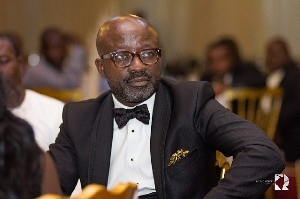The Bible states that the first human was fashioned from clay and put in the Garden
of Eden, by the Hebrew deity Yahweh. Later one of his ribs was taken and used to
create the first woman. As a result all humans alive today, as well as all those
that have ever walked this earth, are descendants of this initial couple. But is
this account true and accurate? How can it be proven or possibly challenged? This
article presents some of the testable and verifiable evidence addressing this
question.
Every tribe, creed , ethnic group, or religion in the world today has a story
regarding the origin of humans, and who the first humans were and what led to their
rise on the earth. Interestingly in the case of religion, these initial humans,
their spouses, or offspring always tend to become the originators of that religion.
For example Judaism claims Adam to be the direct descendant of the chosen people,
they the Jews. Christianity claims its founder, Jesus of Nazareth to be a direct
descendant of Adam of Eve. Islam holds Adam as the first prophet. In the ancient
Egyptian religion the main deity, the sun god Ra, was the first creation of Osiris.
Ra later fathered children with a mortal and spawned the entire human race. And
there are many examples of such stories from all over the world. But what is the
testable method by which these claims can be verified or refuted?
Since the late 19th century it had been known that a certain structure or process in
the cells of living organisms was responsible for the inheritance of traits from one
generation to the next. In 1956, in one of the most remarkable scientific moments of
the 20st century, Crick and Watson correctly described this entity as DNA, an
almost six foot long complex double-helix molecule coiled and twisted to fit inside
of the nucleus of every single cell in the body of an organism. During sexual
reproduction one half of the double helix structure from one parent merges with that
from the other parent. In this way we inherit traits from both parents. The DNA in
our cell nuclei are organized into structures called chromosomes. Different species
have different numbers of chromosomes in the cell nucleus, for example humans have
46 chromosomes, chimpanzees and gorillas, have 48 chromosomes, rats have 42
chromosomes, the chicken has 72, the mosquito has 6, the turkey has 82, the
pineapple has 50, yeast has 32. This collection of chromosomes for a species is
called its genome, so we say the human genome has 46 chromosomes. The genome
therefore carries the entire genetic code (analogous to a set of set of instruction)
needed to build that individual.
In humans 44 of our 46 chromosomes are called autosomal chromosomes, and the other 2
are the sex chromosomes. The latter are the chromosomes responsible for determining
what gender we shall be. The two sex chromosomes have been named the X-chromosome
and the Y-chromosome. All males have the X chromosome and the Y chromosome, whereas
all females have two X chromosomes. Therefore if the X sperm fertilizes an X egg it
will produce a female, if Y versus X respectively it will produce a male child. So
all males inherit their Y-chromosome from their fathers and never their mothers.
This also means it is males that are responsible, genetically for, producing females
and not the mothers as is commonly claimed in many of our customs, folklore and old
wives tales.
Another structure in cells is the mitochondrion (plural mitochondria). This
structure absorbs certain chemicals to produce energy for the cell. The mitochondria
also contain a DNA strand known as mitochondrial DNA or mtDNA for short, However the
mechanism of inheritance of mtDNA is much different than that of our sex DNA. mtDNA
is inherited exclusively from our mothers. No human inherits mtDNA from the father.
This is similar to how no male human inherits Y-chromosome from the mother.
So by studying the Y-chromosome of a male individual and comparing with others we
can determine if those individuals share a common father, or grandfather or great
great great great grandfather or in fact we can go all the way back to the common
ancestor of males. Similarly we can test mtDNA of a male or female and compare with
that of other individuals to determine if they share common a mother, grand mother,
great great great grandmother etc and likewise we can go as far back to identify the
common female ancestor of all humans. For the purposes of this article we shall call
the common female ancestor Mitochondrial Eve, and the common male ancestor as
Y-Chromosome Adam.
In 2002 a young geneticist and anthropologist, Spencer Wells of Harvard University
set out to decipher the human family tree by traveling the world and collecting DNA
samples, to attempt to establish who Mitochondrial Eve and Y-chromosomal Adam were,
where they lived, and when.
Female Ancestry by mtDNA
By studying mtDNA samples from all over the world humans can be grouped into what
are called haplogroups. A haplogroup represents a group of populations with a common
female ancestor based on mtDNA. As we have learned genomes accumulate more traits
with further reproduction of subsequent generations, and the passage of time. New
traits may arise due to gene insertions, deletions, or mutations. (To understand
these concepts readers are referred to review material on the process by which DNA
replicates itself as cells divide to form new cells). So if haplogroup A contains
traits (a,b,c,d,e) and haplogroup B contains traits (a,b,c,d) we can tell that
haplogroup B shares common ancestry with A but less one trait. Therefore haplogroup
B is a new group that branched from haplogroup A at some point, yet shares common
ancestry with it. Also due to the fact that the rate at which insertions, deletions
and mutations etc occur in the grand time scale is known to some level of accuracy,
the time at which lineage B split from lineage A can also be estimated. Another
example, assuming we have in addition two other haplogroups C with (a,b,c,e),
haplogroup D with (a,b,c), Then the ancestries would be as follows: A-B-D, and A-C.
In other words looking at the common lineages A split into B and C, then D split
form B. Note that A and B do not terminate, they continue even though other branches
split off from them. The only reason a lineage will terminate is if for some reason
there are zero females in a generation so that lineage can no longer continue
propagating their mtDNA. Also note that the older a lineage the more genetic
diversity is possesses, therefore able to spawn others and not vice versa. So far at
least 35 human mitochondrial DNA haplogroups have been documented. A few examples
are described as follows;
Group L: These are lineages found predominantly in Africa. There are several sub
groups for example subhaplogroup L3e comprises most West Africans such as Ghana,
Nigeria, most African Americans, Afro-Brazillians, and Afro-Caribbeans. It has been
shown this group originated in Sudan around 45,000 years ago.
Group M: This lineage is found mostly in the Middle East and Asia. It has so far 48
and counting subgroups. Some examples include M4 in Saudi Arabia, M27 found in
Melanesia (Papua New Guinea etc), M30 found all over India and Bangladesh, M48 the
Australian Aborigines. The DNA markers of all Group Ms clearly show they split from
Group L.
Group D: This haplogroup is descended from Group M. It currently has over 56 sub
groups. It is found among indigenous groups in Siberia. It is the most common group
in Korea, and high prevalence among Native Americans.
Readers are encouraged to review the other groups and their relevant subgroups.
So who was Mitochondrial Eve? Well, based on the above discussion and evidence, it
turns out that all haplogroups were descended from Group L. Among this group L0d has
the highest genetic diversity. The Khoisan tribes of the Kalahari Desert commonly
known in the media as the Bushman have tested between 79 to 100% within haplogroup
L0d. So we can infer that if the Bushmen have the highest genetic diversity among
haplogroup L and that all other haplogroups worldwide have haplogroup L as the
common ancestor, then it is evident that the female common ancestor of all humans
alive today and whoever walked on this earth, was a Khoisan woman. A black African
woman living somewhere in the neighborhood of Botswana, Namibia, Tanzania about
144,000 years ago.
Male Common Ancestry By Y-Chromosome
In a similar fashion as the mtDNA, the DNA of the male y-chromosome can be studied
to pinpoint its common ancestor. In a similar fashion the entire worldwide diversity
of male Y-chromosomes can be divided into 23 y-chromosomal haplogroups. Some
examples include
Haplogroup C: This is includes southern Asia, and native Americans. The ancestor
group is Haplogroup CF and its descendent Haplogroups include C1, and C3. C3 is
found among indigenous groups in Northeast Russia and the native Americans in Canada
and the US. CF is found in South Asia and estimated to have originated from a
mutation in the CT group 55,000 to 60,000 years before present.
Other haplogroups include C, BT, CT, A, I, J, L and many others. No specific results
have been published for Ghana as of this article however so far most sub-Saharan
groups have tested positive for haplogroup B which is just two haplogroup
generations from the original y-chromosomal haplogroup. The results show that among
groups there is much more diversity of lineages when compared to mtDNA from our
matrilineal lineages. This is consistent with known previous and even present male
sexual behavior. As we know men are more adventurous sexually than women and in most
societies even up till now male promiscuity, multiple wives, fathering children out
of wedlock, marrying foreign wives etc etc is generally condoned, not punished,
kept quiet, or simply accepted, whereas the same cannot be said for acceptable
female sexual behavior or choice of sexual or marriage partners. Also it is easier
for a male to impregnate than for a woman to get pregnant. A male can father
multiple children in a much shorter time.
So who was the common male ancestor of all humans to date, the so called
Y-chromosomal Adam? The genetic evidence suggests a black African individual who
lived somewhere around 60,000 to 90,000 years ago. However due to the wider
diversity and dispersal of the male y-chromosome, the exact tribe or location of
this person has yet to be pinpointed but research is ongoing.
So as we can see, Mitochondrial Eve lived around 144,000 years ago whereas
Y-chromosome Adam lived around 60,000 years ago. So they did not know each other,
and were not husband and wife. They were not even alive at the same time. This means
they were not the only people alive at the time they lived. It means there were
others also living who we have not identified but it was that only Mitochondrial
Eves descendants were able to maintain an unbroken chain of reproduction from then
until this time. The same applies for Y-chromosomal Adam.
The timeline of Mitochondrial Eve also is consistent with the rise of modern Homo
Sapiens in Africa according to the other studies on the evolution of humans from a
common ancestor they share with chimpanzees. Further studies and improved technology
will soon enable us to conduct a similar study to identify the common ancestry
between say humans and chimps and gorillas. Research is currently underway. It must
also be noted that the dating of Mitochondrial Eve dealt a serious blow to
supporters of the Multiregional Evolution of Humans hypothesis. Under this
hypothesis it was posited that humans did not evolve from a common ancestor but
rather they evolved all over the world from the endemic pre-human species living in
that area at the time. So Europeans would have evolved from Neanderthals, Asians
would have evolved from Homo Erectus, Africans would have evolved from Homo Egaster,
Homo Rhodesiensis or even maybe from the Australopithicenes. The Mitochondrial Eve
study has shown that the Multiregional hypothesis is false, and that humans today
actually do have a more recent common ancestor who was also a modern human, not from
another pre-human species. This study also educates us on racial issues. For all the
trouble race has caused us, there is not a single shred of evidence to prove it even
exists. At the DNA level race does not exist. What we consider to be race today
(based on different skin color or hair type etc) is basically the result of
reproduction among and across different mitochondrial and Y-chromosomal haplogroups
over several generations. An individual of any haplogroup has more genetic
difference and diversity than another individual of that same group than he has with
a member of another haplogroup (if we recall the A, B, C examples that were
demonstrated).
So at this juncture we can now go back to the religious books and review their
claims in the light of the demonstrable facts we have learned today.
1.Do all humans share common ancestry? Yes, but not Hebrew Adam and Eve or Noah.
Testing our very own DNA shows we share a common recent female ancestor who was a
Bushman woman living in the Kalahari desert in south west Africa about 144,000 years
before present. We also have a common male ancestor who was also an African who
lived around 60 to 90 thousand years ago.
2. Are Adam and Eve real, as described in the bible? No, the biblical account is not
supported by any testable evidence.
3. Is the common depiction of Adam and Eve as Europeans correct and accurate? No. in
the first place the biblical Adam and Eve story is just a story, not fact. Even if
it were true the first humans did not have white skin. According t the genetic
evidence they would be blacks.
4.Are Africans less evolved than others? No, this is a common trick used by
creationists to smear evolution and impress the gullible. They use this statement to
mean that if blacks evolved into whites then whites are more advanced than us. And
since that idea is unacceptable then the whole evolution or even DNA is wrong. In
the first place being African is a matter of geography. There is no such thing as an
African or black race at the DNA level. There is only human species called Homo
sapiens. Our DNA confirms this. Other human like species have lived on earth but are
now extinct for example the Neanderthals and Homo Erectus, we are the last surviving
hominid species. Our behavior, mannerisms, ways of speech etc come from our culture,
not from our DNA. So the claim is false because there is only one human species
living on the earth today. It is interesting the religious books have nothing to say
about Neanderthal or Homo Erectus and other now extinct hominids even though their
remains have been found all over the world.
5.So is the creation story and how humans populated the earth as described in the
bible accurate? No. The bible suggests a flurry of miracles were necessary to create
the earth and the human species. Today we know these came about by natural
processes, and no gods were even necessary. Also the biblical time line suggests 8
to 10 thousand years of human existence. This is false. Our maternal common ancestor
lived about 144,000 years ago, and she is not the only human that was living at the
time, neither was she the first human to ever live, she is simply the starting
person of an unbroken chain of ancestry that has survived to this day and
continues.
6.Why do the religious hate to hear of cutting edge research findings like those
described in this article? Because we have been immersed in religious dogma from the
moment of our births and have immense spiritual investment in it. So to hear that
our favorite god no longer exists is a devastating blow and we tend to kick against
it to preserve what we have even when it is proved to be false. It was just in 2008
that he Catholic church formally acknowledged that the earth is not flat and that it
is not the center of the universe, statements for which they murdered many during
the Inquisition. But as modern enlightened and educated people we must shake off the
chains religion puts on our minds and move ahead in freedom.
.kwaku ba, October 2010












